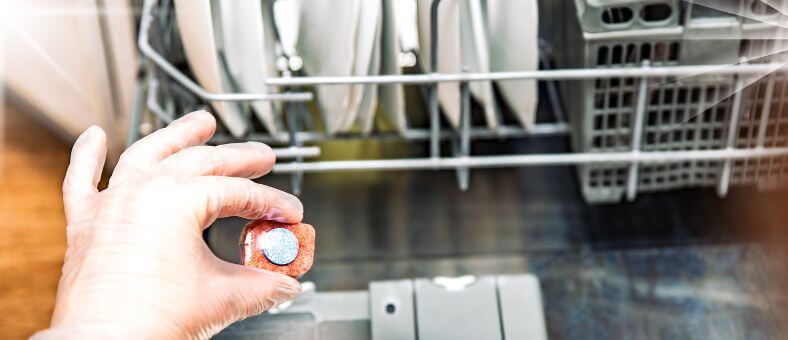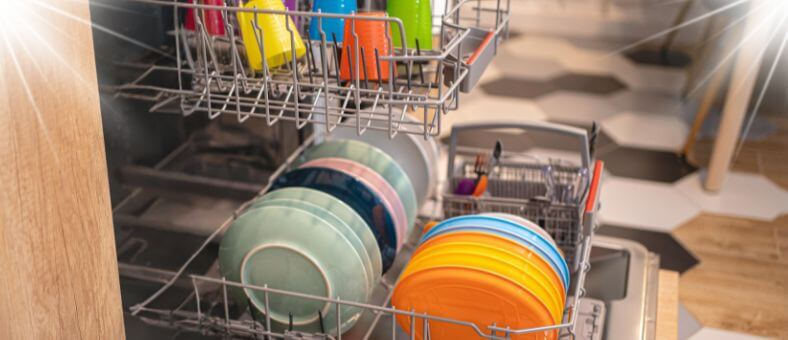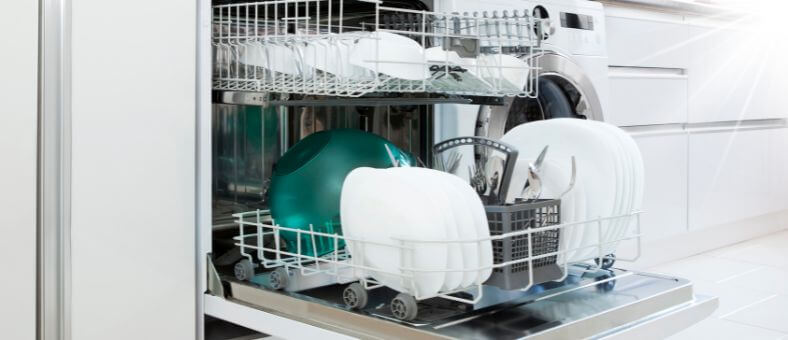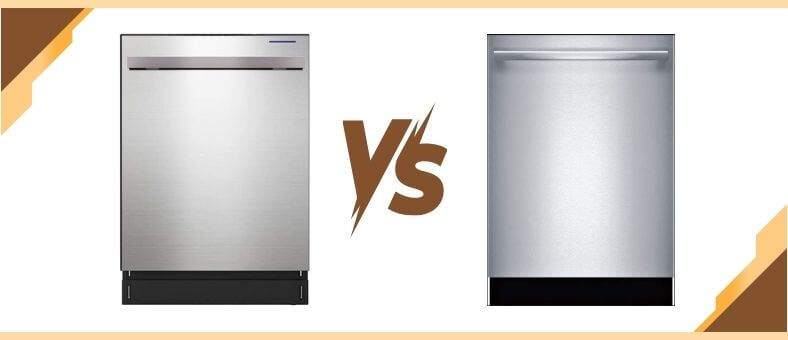Reaping the full benefits of a dishwasher means expecting gleaming dishes with minimal effort. We pop in a dishwasher pod, one of the popular types of detergent, trusting it to deliver that sparkling cleanliness we desire. But what happens when you only discover that the pod hasn’t dissolved when you open your dishwasher? Suddenly, that promise of convenience and efficiency seems to crumble. If this thought, “Why is my dishwasher pod not dissolving?” has crossed your mind, you’re in the right place.
Dishwashers are modern marvels that promise to make our lives easier. Yet, like all appliances, they have their quirks. An undissolved pod can be frustrating, but there are often clear reasons behind it. Some might even surprise you.
In this insightful guide, we’ll uncover 8 eye-opening reasons why your dishwasher pod might be shying away from its duty.
Temperature Insight
Most dishwasher pods require a water temperature of at least 120°F to dissolve completely for optimal performance.
Table of Contents
Understanding Dishwasher Pods and How They Work
Dishwasher pods have rapidly become a go-to choice for many households, offering a convenient and mess-free alternative to traditional detergents. But what goes on inside these little packets, and how do they effectively break down dirt and stains? If you’re new to the world of dishwasher pods or just curious about the correct way to use them, you might want to check out this guide on How To Use Dishwasher Pods.
Components of a Dishwasher Pod
A dishwasher pod isn’t just a pretty package. It’s a marvel of cleaning science, with each section serving a specific purpose:
Outer Layer
This water-soluble film is designed to dissolve quickly upon contact with water, releasing the contents inside without leaving any residue.
Detergent
This is the main cleaning agent, specially formulated to tackle food particles, grease, and other common culprits of dirty dishes.
Rinse Aid
Often incorporated into pods, rinse aids ensure that your dishes come out sparkling-free of water spots and streaks.
Degreaser
As the name suggests, degreasers target and break down fatty residues, ensuring that even your most used pans come out gleaming.
With these components combined into one convenient pod, it’s clear to see why they’ve become such a favorite. But for them to work efficiently, the dissolving process is crucial.
The Dissolving Process
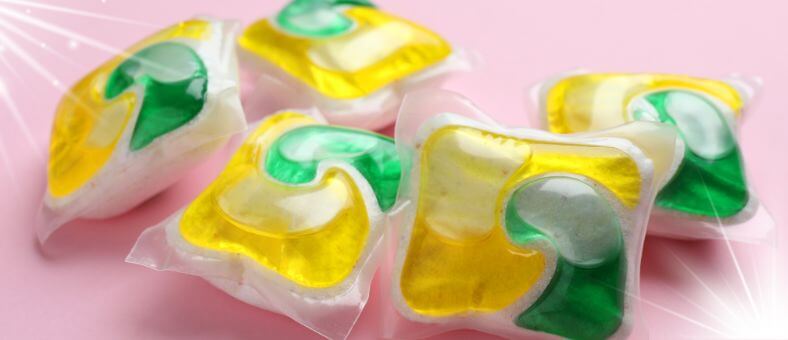
The pod’s outer layer needs to dissolve effectively for the magic to happen. Once your dishwasher cycle begins and water starts to spray, the pod’s water-soluble film begins dissolving. This action releases the concentrated detergents and cleaning agents inside, which work on your dishes.
However, if you’ve ever opened your dishwasher to find the pod partially intact, you’ll know that sometimes, things don’t go as planned. The reasons behind a “dishwasher pod not dissolving” can range from simple loading mistakes to more complex dishwasher malfunctions. But fear not! As you continue reading, we’ll delve deep into these reasons and provide solutions to ensure your dishes always come out spotless.
Reason #1: Cold Water Issues
One common reason could be cold water issues. Dishwasher pods are engineered to dissolve at a specific temperature range. When water is too cold, it might not dissolve properly, leaving you with a sticky mess instead of sparkly dishes.
Most dishwashers are designed to heat the water to the ideal temperature for cleaning and dissolving the pod. However, if there’s a hitch in the heating element or if you’re using cold water directly, it can affect the dissolving process. Always ensure the water heating setting is activated and the temperature is set appropriately.
Reason #2: Compartment Obstructions
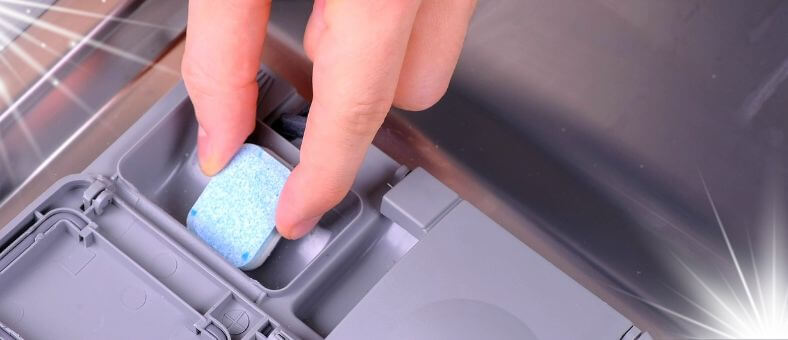
Another common reason your dishwasher pod might be acting stubborn? Obstructions in the detergent compartment. Here’s the deal: water can’t reach the pod if the compartment door doesn’t open correctly during the wash cycle. Consequently, the pod doesn’t dissolve. Little things like a misplaced utensil, a large dish, or a pod can prevent the door from opening. Correctly loading your dishwasher is essential, ensuring nothing obstructs the detergent compartment. Periodically inspect the compartment’s mechanism to ensure it functions smoothly.
Reason #3: Spray Arm Blockages
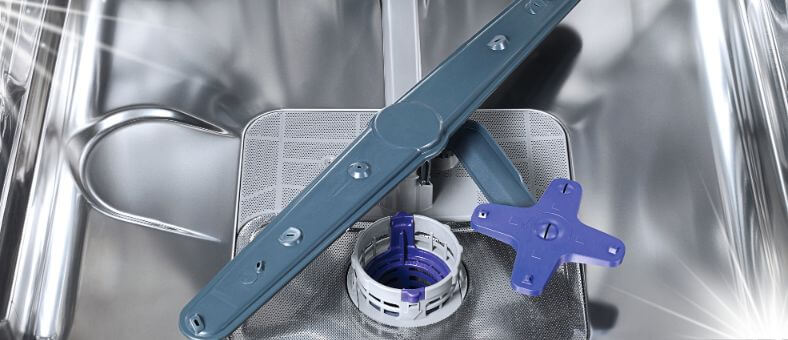
The spray arm plays a pivotal role in ensuring the water reaches all areas inside, including where your pod is waiting to spring into action. But what if it’s blocked? Debris, accumulated food particles, or even a stray seed can clog the spray arm holes, limiting the water spray’s range and force. With insufficient water reaching the pod, you might end up with it not dissolving at all. Wondering about the amount of water your dishwasher uses during its cycle? Check out our detailed guide on How Much Water Do Dishwashers Use. Regularly inspect the spray arm, gently clean it, and ensure it rotates without hindrance. This simple step can save a lot of dishwashing heartaches!
Reason #4: Overloading Consequences
We’ve all been there – a mountain of dirty dishes and the temptation to cram as many as possible into one wash. However, overloading your dishwasher can have some unintended consequences. Not only can it affect the overall cleanliness of your dishes, but it can also be the sneaky culprit behind a dishwasher pod not dissolving. Water and detergent can’t circulate effectively when you stuff your dishwasher to the brim. The pod might not get enough water to start its dissolving magic. Moreover, an overstuffed dishwasher can lead to dishes blocking the detergent compartment or the spray arms. The mantra here? Load sensibly and give your dishes and that pod the space they need to shine!
Reason #5: Cycle Selection Matters
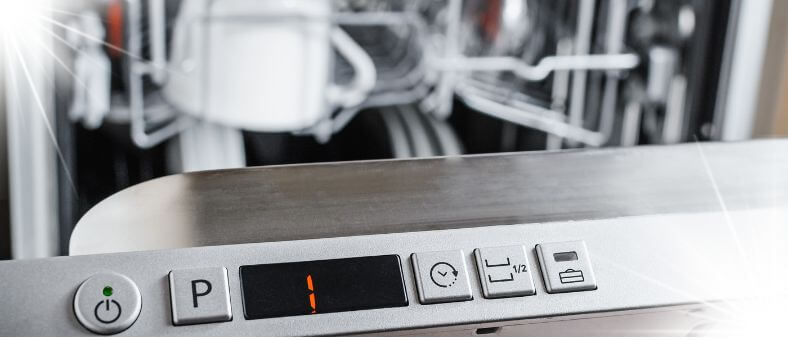
Your dishwasher isn’t just a one-trick pony. Those multiple-cycle options are there for a reason. Selecting the right cycle is pivotal in how effectively your dishwasher pod dissolves. Quick or eco cycles use less water and run for a shorter duration. This might not allow the pod to fully dissolve, especially if it’s designed for a more intensive cycle. Conversely, choosing a heavy-duty cycle for a few dishes can be overkill. Want to master your dishwasher’s settings? Dive into our guide on Dishwasher Cycles and Settings. Know your cycles, match them with your load, and remember: the right cycle ensures your pod works its best!
Reason #6: Variability in Pod Brands
All dishwasher pods are not created equal. Just like choosing between a bubbly cola and its numerous off-brands, there’s variability in dishwasher pod brands. Some are crafted to dissolve faster; others might need specific conditions to perform optimally. It might be a brand-specific quirk if you’ve recently switched brands and noticed the pod isn’t dissolving. Always read the user instructions that come with your chosen brand. Sometimes, the solution might be as simple as switching to a brand more compatible with your dishwasher and water conditions.
Reason #7: Pod Placement Importance
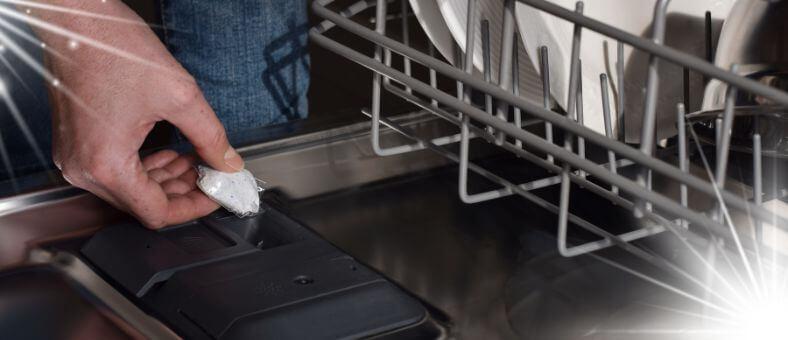
Believe it or not, where you place your dishwasher pod can make all the difference. It’s not just about tossing it in and hoping for the best. Pod placement is pivotal to ensuring it dissolves correctly. Usually, pods should be placed in the detergent compartment for optimal performance. If you’re tossing them at the bottom of the dishwasher, they might not get the right water flow to kickstart the dissolving process. Another nifty trick is ensuring they aren’t stuck or wedged between items, which can hinder the dissolving process. So next time, take a moment to ensure your pod is perfectly placed, setting the stage for a flawless clean.
Reason #8: Hard Water Effects
Water isn’t always just… water. Different regions can have varying levels of mineral content in their water supply. If you’re in an area with hard water, you’re dealing with water that has a high mineral content, especially calcium and magnesium. And here’s the unexpected twist: hard water can stealthily prevent your dishwasher pod from dissolving as it should. These sneaky minerals might leave you with half-dissolved pods and dishes that lack sparkle.
Furthermore, continuous use of hard water can lead to stubborn mineral build-ups in your dishwasher, affecting its performance. Wondering more about this? Dive deeper into Dishwasher Problems Caused by Hard Water. If you’re on the fence, it might be time to look into water softeners or specific dishwasher detergents that take on the challenge of hard water. Give your dishwasher, dishes, and pods the care they deserve!
Common Dishwasher Pod Problems
The dishwasher pod is a modern marvel of kitchen convenience. It contains powerful cleaning agents in a neat little package that you simply pop into your dishwasher and let it do the rest. However, sometimes things don’t go as planned. Let’s look closer at the common pod-related issues dishwasher users encounter.
Incomplete Dissolution
The most obvious issue. You open your dishwasher, expecting shiny dishes, only to find the pod partially or completely intact. The reasons can range from cold water problems to incorrect machine loading.
Residual Streaks
While the pod dissolves, it might sometimes leave streaks or residues on dishes. It’s often due to the inadequate dispersion of the detergent during the wash cycle.
Pod Doesn’t Break Free from the Compartment
Sometimes, the pod doesn’t even make it out of its compartment, often because of a malfunctioning release mechanism or being trapped by misplaced dishes or utensils.
Over-foaming
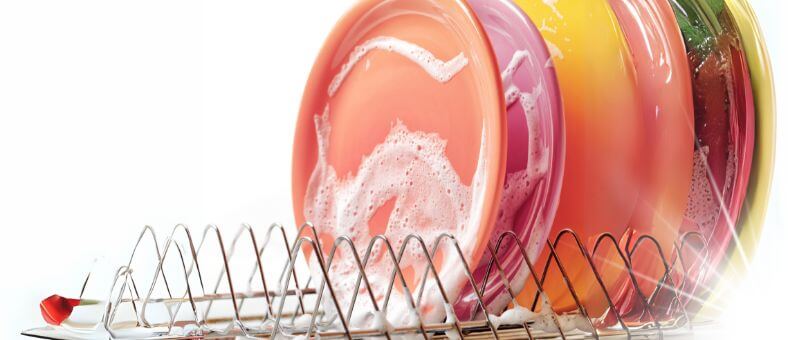
Occasionally, a pod might produce excessive foam, potentially leading to a mess or decreased washing efficacy. It might be due to using a pod not designed for your dishwasher model or brand.
Top Choice by Households
Over 65% of households prefer dishwasher detergents with eco-friendly ingredients, emphasizing cleanliness and environmental responsibility.
Discoloration of Plastics
Some users notice that plastic items, like Tupperware or plastic plates, get discolored after washing. It can interact with the plastic and certain chemicals in the pod.
Closing the Cycle: Dishwasher Pod Not Dissolving Insights
We’ve unraveled the mystery behind that sneaky dishwasher pod that sometimes just refuses to melt away. It’s easy to blame the pod, but as we’ve discovered, many factors come into play. Whether it’s water temperature, pod placement, or even the brand of the pod, it’s all connected. Now, with this newfound knowledge, you’re more than ready to tackle any dishwasher challenge that comes your way.
Say goodbye to those moments of frustration and hello to spotlessly clean dishes every single time. With the right insights and patience, you’re setting yourself up for a future of effortless and effective dishwashing. Dive in, make those changes, and enjoy the dazzling results! Happy dishwashing!
7 Shocking Dishwasher Dispenser Issues You Must Know!
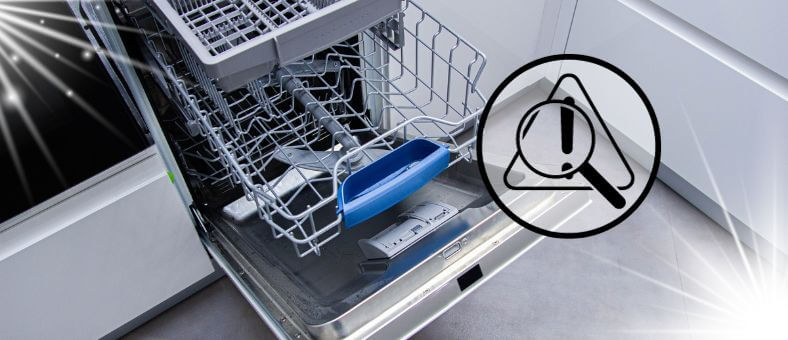
The dishwasher dispenser might seem minor, but it’s essential for achieving spotless dishes. Located inside your dishwasher, this compartment holds the detergent or pod, releasing it at the ideal moment during the wash cycle for optimal cleaning.
In essence, the dispenser is a blend of simplicity and precision. It ensures that detergent is introduced correctly, working harmoniously with the water jets for thorough cleaning. A well-understood and maintained dispenser can prevent common hiccups and keep your dishes shining after every cycle. As we delve deeper, you’ll appreciate this tiny component’s pivotal role in your dishwasher’s performance. Let’s dive in!
Evolving Dispenser Designs
Over the decades, dispenser designs evolved, adapting to the introduction of detergent pods, tablets, and other innovations, making modern dishwashing more versatile than ever.
#1. The Stubborn Door: When It Won’t Open
Many of us have wrestled with a dishwasher dispenser door that refuses to budge. This issue often arises due to mineral buildup, dirt, or a faulty mechanism. Regular cleaning and ensuring no large dishes block its pathway can prevent such stubbornness. If the problem persists, it might be time for a repair.
#2. Leftover Detergent: Why It Stays Behind
Discovering undissolved detergent after a wash cycle can be frustrating. This usually happens when water doesn’t adequately reach the detergent compartment, often due to overloading or blockages. Always ensure your dishwasher is adequately supplied and the spray arms are debris-free.
#3. Drips and Drops: When the Dispenser Leaks
Leaks are never good news. If your dispenser drips detergent, it could indicate a damaged or misaligned door. A quick inspection and ensuring the door shuts correctly can often fix the issue. Persistent leaks might indicate the need for part replacement.
#4. Too Much of a Good Thing: Overfilling Issues
Overenthusiasm with detergent can lead to overfilling the dispenser. It might seem like more detergent equals cleaner dishes, but excess detergent can leave residues. Always adhere to the recommended detergent amount for the best results.
#5. Not Rinsing Right: Problems with Rinse Agents
Rinse agents play a crucial role in leaving dishes spot-free. If dishes come out cloudy or streaked, there might be an issue with the rinse agent’s dispenser. Check if it’s filled correctly and dispensing the right amount. Sometimes, adjusting the settings does the trick!
#6. Worn Out Parts: The Usual Suspects
Like all components, the parts of a dishwasher dispenser can wear out over time. After extensive use, springs, hinges, or even the door itself might need replacing. Keeping an eye on the dispenser’s condition and timely replacements can ensure uninterrupted, efficient washing.
Keeping Your Dispenser Happy
Your dishwasher is more than an appliance; it’s a kitchen ally. Central to its performance is the dispenser, ensuring every dish sparkles. Like all important tools, it demands attention. A dash of regular care, correct detergent usage, and timely fixes can amplify its efficiency. After all, a happy dispenser leads to perfectly cleaned dishes. Let’s commit to giving it the care it rightfully deserves!
At WashDryDazzle, our primary goal is to equip you with invaluable knowledge to simplify your day-to-day tasks; to explore more, check out our central hub of Dishwasher Guides.
Frequently Asked Questions (FAQs)
Why is the quality of dishwasher detergents important?
The quality directly impacts the cleaning efficiency, ensuring dishes are spotless and residue-free. Premium quality detergents dissolve better and tackle stubborn grime more effectively.
Are there any signs that my detergent is of low quality?
Common signs include residues on dishes after washing, a film or cloudy appearance on glassware, and undissolved pods. If you consistently face these issues despite optimal dishwasher settings, it might be time to reconsider your detergent choice.
What Dissolves Dishwasher Tablets?
Dishwasher tablets are designed to dissolve in warm to hot water during the dishwasher cycle. The tablet’s outer layer breaks down upon contact with water, releasing the cleaning agents inside. Ensure your dishwasher heats the water to the recommended temperature, usually between 125°F and 140°F, for optimal dissolution. If your tablet isn’t dissolving, there could be an issue with the water temperature, tablet quality, or the dishwasher’s heating element.
Can low water pressure in my dishwasher cause the pod not to dissolve?
Yes, low water pressure can hinder the efficient dissolution of the pod. The pod requires adequate water to break down and disperse the detergent throughout the dishwasher.
What are the common reasons for low water pressure in dishwashers?
Common reasons include clogged filters, blocked spray arms, a malfunctioning water inlet valve, or issues with the home’s water supply.

